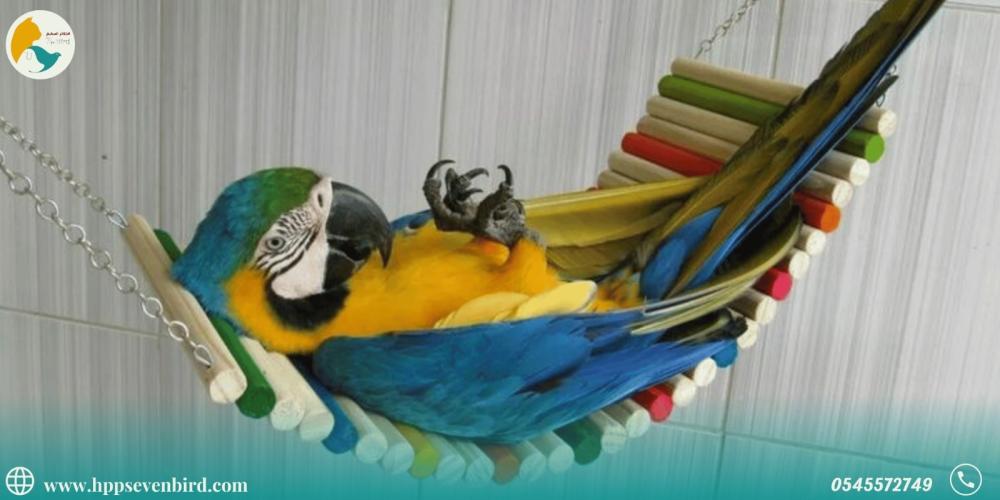Raising a parrot is a rewarding experience, but raising it to become an adaptable part of your home environment without a cage requires a deep understanding of its behavior, patience, and commitment. This approach aims to provide maximum freedom and reassurance for your bird, while maintaining its safety and the safety of your home.
:Understanding Parrots and Their Basic Needs
Before you begin, it's important to realize that parrots are highly intelligent and social animals. In the wild, they live in flocks and rely on social interaction. This means your bird will need plenty of attention and human interaction to thrive in your environment.
Choosing the Right Species: Not all parrot species are well-suited to free-range living indoors. Smaller and medium-sized parrots, such as cockatiels, budgies, and conures, may be a better choice for beginners. Larger species, such as macaws or cockatoos, require more space and more experience in handling their aggressive behaviors.
Bird's Age: It's best to choose a young parrot (a chick) that has been hand-raised, as they are more likely to interact with humans and form strong bonds.
Open Cage as a "Home Base": Even if your goal is to raise your parrot without a traditional cage, you should provide a large, comfortable cage that serves as the bird's home.
:Preparing the home environment for free-range living
The most important step in raising a free-range parrot is to secure your entire home. Parrots are very curious and can easily become vulnerable.
Room Safety:
Windows and Doors: Ensure they are always tightly closed or covered with strong mesh to prevent escape or collision.
Fans: Turn off ceiling and standing fans when the bird is present.
Electrical Wires: Cover or completely hide them to prevent the bird from biting them, which could result in electric shock.
Poisonous Plants: Remove all houseplants that are toxic to birds.
Chemicals: Keep all cleaning products, medications, and cosmetics out of reach of the bird.
Open Water Sinks: Ensure toilet and bathtub lids are closed to prevent drowning.
Small Objects: Remove any small or shiny objects that a bird could swallow and cause choking.
Multiple Perches: Distribute safe and comfortable perches (natural wood, rope) in different parts of the room or house, at various heights.
So we have dedicated to you from the seventh bird:
Chilled bird perch anti-biting wood parrot
bird stand and holder is made of stainless steel from Seven Bird
Play Stations: Designate hanging or standing play areas with a variety of toys (chewing toys, brain teasers) to keep your bird occupied and mentally stimulated.
So we have dedicated to you from the seventh bird:
Stand toys for birds and parrots from Brevo
Multi-role stand toys for birds and parrots from Brevo
Food and Water Space: Place food and water bowls in fixed locations that are easily accessible to your bird, and change them regularly.
So we have dedicated to you from the seventh bird:
Nobleza Plastic Bird Drinker 9.5*4*7.5 cm
:Taming and Building Trust
This is the most important stage of integrating your bird into your environment. It requires great patience and understanding.
Let the bird acclimate: When your new parrot arrives, let it explore its cage and new home quietly for a few days without trying to handle it. Talk to it calmly and consistently.
Adapting your hand: Start by placing your hand near the cage, then inside the cage, without trying to touch the bird. Offer it treats (such as a small piece of its favorite fruit) from your hand.
:Dealing with Challenges and Behaviors
Dung: Parrots leave droppings wherever they go. Be prepared for constant cleanup. You can try training your bird to eliminate in specific areas by placing it on top of newspaper or a wastebasket immediately after waking up or after eating.
Chewing and Destruction: Parrots have a strong chewing instinct. Provide plenty of safe chew toys (such as untreated wood or clean cardboard) to distract them from furniture or other objects.
Noise: Some parrot species are naturally noisy. Learn to understand your bird's sounds, when they are just normal communication, and when they indicate distress or boredom. Aggression or Biting: If your bird starts biting, try to understand the reason (fear, jealousy, demanding attention). Avoid yelling or physical punishment; instead, ignore bad behavior and give attention to good behavior.
:Ongoing Health Care
Diet: Provide a balanced diet consisting of high-quality pellets, as well as a variety of fresh fruits and vegetables. Avoid toxic foods.
So we have dedicated to you from the seventh bird:
Royal vogelfutter Bird Food High Quality Grain Mix 12kg
Harrison High Potency Course Large & Medium Parrot & Bird Food 2.27kg
Hygiene: Clean the food and water bowls daily, and clean the cage and perches regularly.
Veterinary Checkups: Make regular visits to an avian veterinarian (Avian Vet) to ensure your bird's health.
Raising a parrot without a cage is not just about releasing a bird; it's about building a deep relationship based on trust and mutual respect, and providing a safe and stimulating environment that meets its every need. With patience and commitment, your parrot can become a wonderful companion and a beloved member of your family.

